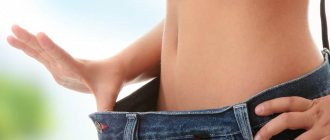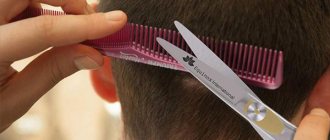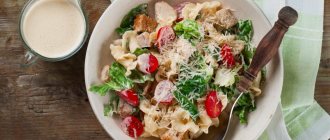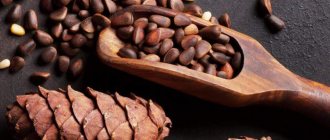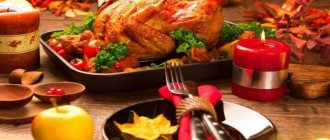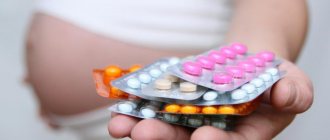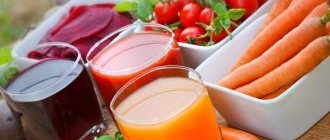- September 7, 2018
- Diets for health
- Valieva Olga
Poor nutrition, alcohol abuse, smoking and taking medications inevitably lead to the development of chronic diseases of the liver, pancreas and gall bladder. You can take expensive medications and try modern therapy techniques. But without following the “Table No. 5” diet, you can’t expect remission for liver diseases. Any gastroenterologist will confirm that without changing eating habits, pathologies will only get worse. Healing diseases of the biliary tract, liver and pancreas is impossible without strict adherence to therapeutic diet No. 5 according to Pevzner (a gastroenterologist and nutritionist who developed this nutrition system).
Causes of liver and gallbladder diseases
Depending on the patient's initial health, liver disease may progress faster or slower. Almost always, the onset of pathology goes unnoticed, since there are no nerve endings in the tissues of the organ. The liver cannot hurt, and only when the organ increases to a critical size due to inflammation or the formation of hemangiomas does a person feel discomfort due to compression from the organs surrounding the liver. One ultrasound can show a sad picture: often this is an enlargement of the organ, fatty degeneration of a larger or smaller part of it, as well as fibrosis, the presence of hemangiomas, etc. A biochemical blood test will help supplement the clinical picture (ALT, AST, and total bilirubin will be increased). In some cases, additional studies will be needed: biopsy and MRI.
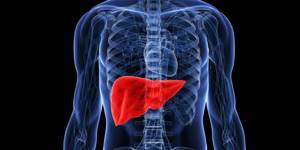
The most common causes of liver disease:
- alcohol abuse;
- long-term use of toxic pharmacological drugs;
- unhealthy diet with an abundance of fatty foods;
- concomitant diseases: cholecystitis, impaired bile outflow, etc.;
- drug addiction and substance abuse;
- hereditary genetic predisposition;
- undergoing chemotherapy and radiotherapy for cancer.

How to help the liver work properly
First of all, you need to avoid foods that negatively affect this organ.
Eat smoked, spicy, fatty, pickled foods as little as possible - these are the main enemies of the liver. Do not eat foods that have been processed - sterilized, pasteurized, or containing dyes or preservatives. All this only adds to the work of the liver.
Sausages and sausages, ready-made minced meat contain nitrates and also put too much strain on the liver.
She does not like sour berries, as well as radishes, garlic and radishes.
Avoid fast food, fatty and sweet pastries and cakes, and alcohol. After all, after drinking alcoholic beverages, the body receives serious poisoning, and the main blow falls on the liver. And if you regularly expose it to such a load, then even a healthy liver will not be able to withstand it - normal liver cells will degenerate into fat cells, and the body will be left with virtually no protection.
Why is it so important to follow the “Table No. 5” diet for liver diseases
Under no circumstances should nutrition be ignored once the exact diagnosis is known. Without strict adherence to the therapeutic diet No. 5 according to Pevzner, achieving long-term remission is impossible.
In most cases, it is possible to stop pathological processes in the liver and fatty degeneration of the organ. Especially if the process is still at an early stage. Over time, almost all seemingly harmless liver diagnoses lead to cirrhosis. And this is an incurable, fatal disease. A person dies slowly, suffers from severe pain, and almost all body systems gradually fail.
In order to prevent this process, it is necessary to study the nutritional principles of the “Table No. 5” diet for liver diseases as quickly as possible. You will have to eat this way for the rest of your life. If you neglect nutrition according to the principles of table No. 5, then relapses of the disease are inevitable.
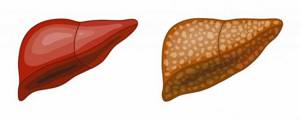
Basic principles of dieting:
- split meals four to five times a day, do not go hungry - this will lead to disruption of the outflow of bile;
- maintain a water regime - drink as much clean water as possible, this will reduce the load on the liver;
- Proteins should predominate in the diet, and the amount of fat consumed should be reduced to a minimum;
- the rate of sodium chloride (salt) consumption should be within 8-12 grams per day;
- the total calorie content of the daily diet is calculated depending on daily employment and physical activity; on average for women this figure is 2000 kcal, for men - 2800-3500 kcal;
- complete refusal to drink any alcoholic beverages, even in minute quantities.
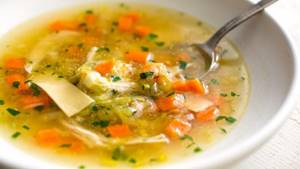
Rationale for the beneficial properties of foods included in a therapeutic diet for the liver
The diet provides certain foods with food ingredients that improve liver function. Since their choice is important for shaping the patient’s diet, we will focus separately on explaining the appropriateness of use. The main source of proteins is meat and fish, dairy products, limited eggs
In the diet, you will need to use only low-fat varieties, since animal fat contains a high concentration of cholesterol and aggravates the fatty degeneration of liver cells. Legumes are known for their protein properties, but they are difficult to tolerate by the digestive system, cause bloating and increased fermentation in the intestines, and are therefore not recommended.
To normalize fat metabolism in the diet, lipotropic substances are needed that restore the active processing of liver lipids into energy, stimulating the excretion of fatty acids with bile into the intestines to combat fatty infiltration.
The maximum lipotropic effect is found in cottage cheese, seafood, fish, eggs, lean beef, and soy flour. Plant fiber has moderate lipotropic properties. It also improves intestinal function, which means it promotes the accelerated elimination of cholesterol.
Fiber - found in all vegetables and fruits (the concentration is maximum in dried fruits), in the fresh juices of apples, pumpkins, beets, and avocados. Wheat bran is added to the diet. The medicinal value of beets for the liver also lies in the increased content of pectin and betaine.
The lipotropic effect is enhanced by polyunsaturated fatty acids. The most famous of them are: omega-3, omega-6, arachidonic, linolenic. They are contained in sufficient quantities in vegetable oils (linseed, corn, olive, sunflower, milk thistle). Therefore, the diet requires their use instead of animal fats.
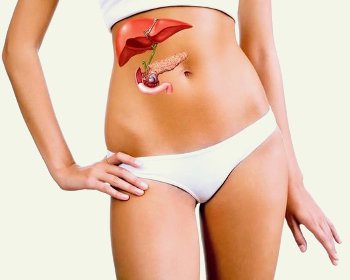
Diet “Table No. 5”: what you can and cannot do
List of allowed foods (you can cook any dishes from them, frying is prohibited, boiling, stewing, baking is allowed, some vegetables can be eaten raw):
- lean meats - veal, chicken, rabbit, turkey, nutria, venison;
- fermented milk products, and the fat content should be no more than 5%;
- vegetables and fruits low in acids (prohibited ones are listed below);
- porridge - buckwheat, rice, oatmeal;
- Honey can be consumed in small quantities (no more than 50 grams per day);
- fish and seafood (be careful with salmon - there is a lot of fat in them; despite the fact that they are good for health, salmon fish can be eaten no more than once or twice a month);
- vegetable oils: olive, flaxseed, peanut, cottonseed, sunflower, grape seed - no more than 40 ml per day;
- durum wheat pasta;
- dried bakery products.
On the “Table No. 5” diet for liver diseases, the consumption of the following foods and dishes from them is prohibited:
- fatty meats;
- butter, margarine;
- fresh bread;
- butter dough;
- chocolate;
- ice cream, pastries, cakes;
- eggs (it is permissible to eat no more than one per day, and only during the period of remission);
- cabbage (all types), spinach, sorrel, lettuce, garlic, onions, tomatoes, radishes, radishes, asparagus, legumes (lentils, peas, peanuts, beans, beans);
- canned foods and pickles (both factory-made and homemade);
- carbonated drinks, coffee, strong black tea, fatty milkshakes, fermented baked milk with a fat content of more than 5%;
- any alcoholic drinks (beer, wine, vodka, whiskey, etc.).
Diet results
With strict adherence to the “Table No. Five” diet, you can significantly reduce or even completely eliminate the symptoms of the disease, reduce the load on the liver and speed up recovery. Limiting unhealthy foods leads to weight loss and normal well-being. Thanks to the duration of the diet, liver function is restored and, as a result, the risk of exacerbations is reduced.
- General rules
Liver diseases are widespread nowadays, due to an increase in drug, viral or toxic effects on the organ. Chronic hepatitis are the most common among liver diseases. 60-70% of patients with hepatitis may have no complaints, and the pathology is detected by chance when detected hepatomegaly (liver enlargement) and changes in liver tests. In some cases, the onset of the disease is decompensated cirrhosis of the liver (appears ascitic syndrome, bleeding from dilated veins of the esophagus).The liver participates in the digestive processes, producing bile, and replenishes the body's energy reserves (deposits glycogen ), and therefore participates in the regulation of carbohydrate metabolism. The importance of the problem lies in the fact that chronic and acute liver damage occurs with symptoms of liver failure, in which all liver functions are inhibited, and the most serious is a violation of the detoxification function. The liver neutralizes toxins and poisons, removes excess toxic intermediate substances ( phenol , ethanol , acetone , ammonia , ketonic acids ), excess hormones and vitamins .
Acute liver failure can be the result of severe viral hepatitis , poisoning (industrial poisons, drugs) or blood transfusion of another group. It progresses quickly (several hours or days), and is reversible with timely treatment. Chronic liver failure accompanies cirrhosis or malignant tumors. It develops gradually (weeks or months), but drinking alcohol, stomach bleeding, and physical fatigue can speed up the process.
Because the liver plays an important role in ammonia metabolism, patients with chronic diseases have hyperammonemia (increased levels of ammonia in the blood). A rapidly increasing increase in toxic metabolites leads to the development of hepatic encephalopathy . This disorder of mental and nervous activity can occur with any liver disease that occurs with insufficient liver function and is a serious complication. The patient develops personality changes, impaired consciousness and intellectual impairment. There is an increase in appetite, slurred speech, sleep disturbances, confusion and drowsiness . More often, this condition is a manifestation of the terminal stage of chronic diffuse diseases ( cirrhosis ), which leads to the development of coma and causes death.
The prognosis depends on the severity of liver failure, and it can be improved if treatment is taken in a timely manner. Intensive infusion therapy, forced diuresis, plasmapheresis, enterosorbents that bind and remove toxins ( Polyphepan , Enterosgel , Lactofiltrum , Duphalac ), and probiotics .
All of these diseases and conditions are very serious, so it is important to consult a doctor promptly if you experience discomfort or pain in the liver, loss of appetite, nausea, bitterness in the mouth or severe unmotivated weakness, get examined, start treatment and adhere to proper nutrition.
What diet should you follow for these diseases? The main table for diseases of the liver and gallbladder ( cholecystitis ), bile ducts ( cholangitis ) is treatment Table No. 5 , which has several varieties recommended for different courses of diseases. The diet for liver disease in the acute period should be as gentle as possible - this is Table No. 5A . The purpose of this diet is to spare all digestive organs - not only the liver, but also the stomach and pancreas. This is achieved by eating only boiled (steamed), pureed dishes: twisted meat, chicken, fish, boiled vegetables, boiled semi-liquid porridge. Sautéing, stewing and frying, and raw vegetables are excluded.
Nutrition during the acute period contains:
- Reduced amount of refractory fats and salt.
- Soups cooked in vegetable broths with cereals and grated vegetables. Vegetables should not be fried to season soups. Puree soups are allowed. Season soups with sour cream, milk or cream.
- Stale wheat bread (grades I and II) and unhealthy cookies.
- Lean meat and fish in boiled and steamed form and only minced meat products, fish can be eaten in pieces.
- Semolina, buckwheat, rice, oatmeal and oat flakes, from which porridge is cooked in water (you can add milk). The porridge is ground to a semi-liquid consistency. Thin boiled vermicelli and small pasta are allowed.
- Low-fat fermented milk products, low-fat cottage cheese (natural and dishes made from it). Milk and butter - only in dishes. Sour cream is used as a seasoning for dishes.
- Protein omelettes.
- Vegetable oil (in ready-made dishes and only if well tolerated).
- Vegetables (potatoes, cauliflower, pumpkin, carrots and beets) boiled and grated.
- Ripe, sweet fruits are consumed raw only pureed, baked and boiled.
- Tea with lemon, tea with milk, rosehip infusion, still water.
Increased amount of lipotropic products (cottage cheese, buckwheat, whey, buttermilk).
- broths;
- refractory fats, spices, herbs, marinades and pickles, canned food;
- coarse fiber (legumes, rutabaga, nuts, seeds, mushrooms, white cabbage), vegetables with essential oils (radishes, onions, garlic, green onions, radish);
- fatty meat, offal and fatty fish;
- confectionery with cream, black bread, baked goods, millet;
- coffee, ice cream, chocolate, cocoa;
- egg yolks;
- sour fruits and berries, raw vegetables and fruits;
- alcohol and carbonated drinks.
The same diet should be followed in case of hepatic colic after the attack has stopped. Biliary (liver) colic is a manifestation of cholelithiasis, when for some reason there is a movement of stones, contraction of the gallbladder, accompanied by an attack of sharp pain in the right hypochondrium. Colic can be triggered by fried, fatty or spicy foods, overeating, stress, physical activity or bumpy driving.
In the future, with hepatic colic, for their prevention it is necessary:
- Eliminate from the diet foods that increase bile secretion or sharply limit them (raw egg yolk, vegetable oils).
- Avoid eating fatty fried foods and alcohol.
- Hot spices and dishes, marinades.
- Introduce more fiber into your diet (vegetables, bran, fruits).
- Consume fermented milk products, which, like plant foods, promote the alkaline reaction of bile, and this prevents further increase in stones.
- Drink 1.5-2 liters of water to thin the bile and prevent its stagnation.
What drinks are allowed and prohibited for liver diseases?
On therapeutic diet No. 5, special attention should be paid not only to what the patient eats, but also to what he drinks. It is optimal to allow yourself low-fat kefir and milk, natural yogurt, jelly, and berry compotes.
You will have to forget about coffee, alcoholic and sweet carbonated drinks forever. Even for healthy people, these drinks pose a danger, as they disrupt the flow of bile, irritate the mucous membrane of the esophagus and stomach, and promote increased secretion of hydrochloric acid. For people with liver diseases, drinking these drinks is a direct path to exacerbation and worsening test results. Chicory is a controversial drink: some patients tolerate it well, but in others it provokes a worsening of the condition. Much depends on the quality of the chicory used.
Some patients deliberately experiment with taking illegal drinks, and then are surprised by the appearance of pain in the right hypochondrium, a bitter taste in the mouth in the morning (evidence of a violation of the outflow of bile), abnormal bowel movements, and the appearance of a yellowish tint to the skin of the face and body.
How to prepare first courses for liver diseases
You should not cook first courses with meat broth. Borscht is also excluded, since cabbage is on the list of prohibited foods in liver diet No. 5. Sorrel soup is also prohibited. First courses should be as easy to digest as possible. Vegetable broths will keep you full for a long time, while they contain a minimum of calories, and they are absorbed very quickly.
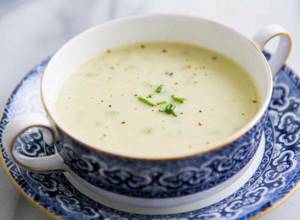
Easy to prepare oat soup. If you get the hang of it and learn how to cook it, it will very quickly become one of your favorite dishes on the liver diet number 5. For the dish you will need: oatmeal, young zucchini, carrots, water, salt. Pour boiling water over the flakes and mix well. Then add the zucchini cut into medium slices and grated carrots. Cook, stirring occasionally. Add salt. This recipe fully satisfies the nutritional requirements of “Table No. 5” and is guaranteed not to cause an exacerbation of the condition.
The recipe for vegetarian light soup for liver diseases is given below:
- Boil two or three potatoes, previously peeled and chopped into strips, in a liter of water.
- After boiling, add salt, grated carrots, and a little green onion.
- Five minutes before the end of cooking (the total boiling time for the soup is 20 minutes), add the diced zucchini.
This soup is delicious immediately after cooking. When reheated, the taste properties deteriorate significantly.
Recipes for every day dishes for a diseased liver
If you have a diseased liver, you can eat boiled or steamed foods as part of your diet. The diet includes various dishes that restore adequate functioning of the gastrointestinal tract.
Oatmeal and cauliflower soup
After boiling, add chopped carrots and potatoes to salted water. After 10 minutes, add a few cabbage florets, as well as a handful of flakes.
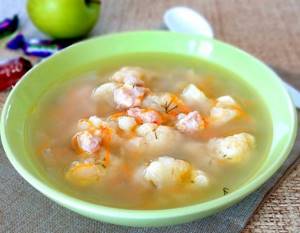
Chicken quenelles with cottage cheese
The fillet is passed through a meat grinder, cottage cheese, beaten egg, salt, and butter are added. The quenelles should be steamed.
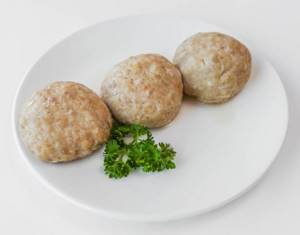
Rice and apple pudding
It is necessary to prepare rice porridge with a viscous consistency. Then add grated apples, sugar and egg yolk, and beaten whites. The mass is poured into a mold and cooked for half an hour.
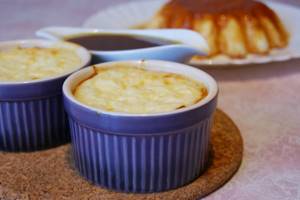
Salad recipes for liver diseases
Salads will help diversify your diet on diet No. 5. Delicious recipes for simple and healthy salads are given below:
- Boil two or three beet tubers, peel them. Grate on a fine grater. Add a tablespoon of olive oil. Crushed walnuts can be added to salad only during the period of remission. Nuts are rich in fat and should be avoided during an exacerbation.
- A Greek salad for people with unhealthy livers can be prepared as follows: chop some lettuce leaves, add pieces of boiled chicken breast, and grated cheese. Season with olive oil. During an exacerbation, it is better not to eat cheese, as it contains quite a lot of fat. You can replace cheese with hard cottage cheese, because they taste very similar.
- Cut the cucumbers lengthwise, cut out the core and form boats. Finely chop the tomatoes and cucumber pulp. Chop the cabbage thinly and cut the egg into strips. To make the filling, you will need to combine vegetables with an egg. Stuff cucumber molds with the mixture. Pour the remaining sour cream over the top of the resulting dish and garnish with herbs.
If you have liver diseases, it is forbidden to add mayonnaise to salads, even in small quantities. There is a lot of fat in this sauce: 67 grams per 100 grams. This is a lot, and one such serving contains more fat than the recommended daily intake. In addition, mayonnaise has no nutritional value, and lovers of this sauce most often suffer from obesity. It is optimal to season salads with either vegetable oil or low-fat sour cream. Add salt to taste, but do not go beyond the recommended amount of salt intake.
The most delicious dishes
Despite significant dietary restrictions, it is still possible to make your diet enjoyable and varied. Your imagination and our recipes will help you with this. Over time, the dishes will seem tastier, and the cooking technology will not be so complicated.
First course recipes
Preference should be given to dishes that have the consistency of rare porridge, which makes the digestion process easier. For the main meal, you can prepare mashed potato soup with chicken. It will quickly satisfy hunger and saturate the body with useful components. If desired, we recommend adding cauliflower, zucchini, pasta or broccoli.
The recipe includes a 200 g chicken breast, 2-3 potatoes, small carrots, and a medium onion. First, the meat should be boiled until tender. At this time, you need to wash, peel and chop the vegetables.
They should be boiled until tender, add chicken meat to them and grind with a blender until a homogeneous mixture is obtained. Salt to taste, but do not forget about the daily limit. Serve warm, as cold and hot foods disturb digestion.
Main course recipe
Many people know the recipe for pilaf, but it is far from dietary. Now we will describe the method of preparing rice, which can be included in table No. 5. To do this you will need the following ingredients:
- half a kilo of beef;
- rice volume 700 g;
- carrots (four pieces);
- medium bulb;
- salt.
The meat must be boiled several times, draining the broth 2-3 times. This will make the beef soft and reduce the fat content of the dish. You can also use chicken breast. The meat should be cooled and chopped into cubes.
Now let's take on the vegetables. The carrots and onions should be peeled, then finely chopped into pieces and poured into a cauldron with meat. You need to simmer over low heat, then add salt to taste. Place washed rice on top and fill with water (the liquid level should be 2 cm higher than the main mixture).
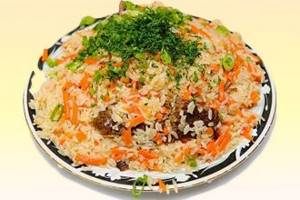
As you stew, you need to stir the pilaf. As rice cooks, it expands and absorbs water. If it doesn’t have time to cook and the liquid in the cauldron runs out, you can add boiled water. Finally, add salt.
Another recipe involves making cabbage rolls. To do this you will need cabbage, carrots, a small onion, 220 g of rice, a boiled egg, tomatoes (2 pieces), vegetable broth and salt.
So, first, let's prepare the ingredients. In order for cabbage leaves to be easily detached from the head of cabbage, you need to lower it into boiling water for a couple of minutes. Rice should be cooked separately. It needs to be filled with water above the level of the cereal and put on fire. The egg is cut into cubes, the onion, carrot and tomato are chopped with a grater and stewed for 5 minutes in a frying pan.
Now we mix the rice with vegetables and eggs, we get the stuffing for cabbage rolls. We wrap the prepared minced meat in each cabbage leaf and place it in a cauldron. Before you start stewing, pour the vegetable broth over the dish. You can use sour cream or herbs for decoration.
Dessert recipe
You can sweeten your diet with warm berry jelly. To prepare, you will need assorted raspberries, strawberries, blueberries and other berries, 30 g of starch, 60 g of sugar and two liters of water. Fruits should be washed and pits removed (if any).
Starch needs to be dissolved in a small volume of water. Separately, add water to the berries and boil. Now add the diluted starch and stir regularly. In a quarter of an hour the jelly will be ready.
To prepare lazy dumplings, you will need an egg, 30 g of sugar, half a kilo of cottage cheese and 150 g of flour. Mix all the ingredients.
After this, knead the dough, adding the required amount of flour. It should be soft and slightly stick to your hands. Roll the dough into a sausage and divide it into pieces. Give the pieces a nice shape and cook them for 2-3 minutes in water. The dish will be ready when the dumplings float to the surface. Alternatively, some of the dough can be frozen and used the next day. Each week should include a variety of dishes, otherwise the patient will lose the desire to follow the diet. Combined treatment of liver pathology with medications and dietary restrictions leads to good results. In most cases, positive dynamics are monitored after a month of therapy.
What sweets and desserts can be consumed if you have liver diseases?
Patients who are forced to adhere to the “Table No. 5” liver diet complain of a constant desire to eat something sweet. The beloved chocolate, ice cream and cakes are prohibited, so we have to look for new ways to please ourselves with something tasty. You can prepare fruit salads, season them with low-fat sour cream or honey.
A delicious and simple dessert - oven-baked apples. Several large fruits should be selected. There is no need to peel them, just cut out the core. Bake in the oven for ten minutes at a temperature of about 200 degrees. If desired, sprinkle the tops of the apples with powdered sugar and cinnamon. The result is a fragrant and healthy dessert.
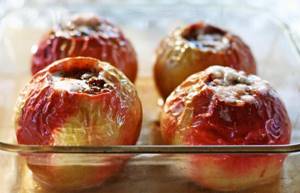
Sample menu for several days
Allowed foods on the “Table No. 5” diet can be swapped at your discretion and you can come up with new interesting recipes from them. A sample menu for several days might look like this:
- Breakfast - oatmeal with dried fruits; snack - a package of low-fat cottage cheese with berries; lunch - puree soup and dietary pilaf; snack - a glass of kefir with an apple or banana; dinner - a piece of grilled fish.
- Breakfast - steamed one-egg omelette and cucumber salad; snack - smoothie made from berries, kefir, cottage cheese; lunch - lean soup with meat; snack - a piece of boiled meat; dinner - cottage cheese with the addition of your favorite berries and fruits.
- Breakfast - buckwheat porridge with cucumbers and boiled turkey; snack - semolina casserole; lunch - dietary pilaf; snack - rice porridge with meat; dinner - pumpkin casserole with cottage cheese.
- Breakfast - one boiled egg and a glass of jelly, several homemade crackers; lunch - cream soup or oatmeal soup, seafood salad with olive oil; snack - homemade basturma from turkey or chicken; dinner - fruit smoothie.
If a patient experiences a feeling of hunger on diet No. 5 for liver disease, it is permissible to diversify his diet with meat dishes. You can cook your own ham, basturma, and sausages from lean meats with minimal addition of spices. Factory-made sausages are prohibited for liver diseases, as they contain a high fat content (about 30 grams per serving).
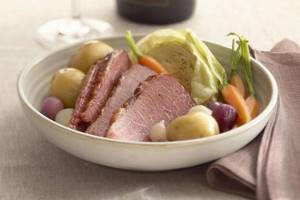
What diet is needed for liver disease
The diet for liver pathologies includes several types. Diets vary depending on liver disease.
For liver diseases, a diet is prescribed, which involves the inclusion of foods beneficial to the organ:
- pumpkin (due to its vitamin E content, which promotes food digestion);
- Brussels sprouts and cauliflower, broccoli due to the presence of vitamin K, which ensures the normal functioning of the digestive tract;
- carrots and beets, which are rich in provitamin A, which improves the elimination of toxins;
- citrus fruits, black currants, rose hips, containing antioxidants;
- seaweed, including salts of alginic acid and iodine;
- artichoke, which normalizes the flow of bile;
- low-fat fermented milk products that heal the intestines;
- oatmeal and buckwheat due to a significant amount of vitamins belonging to group B, PP;
- cold-pressed oils (hemp, olive, flaxseed), as they contain vitamin E and omega-3 PUFAs;
- dried apricots, which include magnesium and potassium, which reduce the likelihood of developing malignant tumors;
- honey, which activates bile production and also promotes the restoration of liver cells.
Strict diet for a diseased liver
With a strict diet, the diet includes:
- probiotics in the form of fermented milk products;
- foods containing significant amounts of fiber, sweet fruits and vegetables;
- whole grain products.
It is important to maintain an optimal drinking regime.
A gentle diet for liver diseases
The diet is table No. 5A. The diet has a gentle effect on the liver, pancreas and other digestive organs. For liver diseases in the acute period, it is recommended to consume pureed dishes and steamed boiled products:
- twisted fish, chicken and other types of meat;
- boiled vegetables;
- semi-liquid, thoroughly boiled porridge.
Atkins diet for liver problems
The diet is balanced and varied. It is designed for 2 weeks:
- Breakfast: bacon and fried eggs. Lunch: baked turkey with rosemary. Afternoon snack: 150 g vegetable salad with sour cream dressing. Dinner: stewed vegetables with beef (finely chopped).
- Breakfast: cucumber, cheese, ham, slice of whole grain bread. Lunch: pumpkin puree. Afternoon snack: 250 ml fermented baked milk. Dinner: meatballs with salmon, vegetable salad.
- Breakfast: banana and low-fat cottage cheese. Lunch: baked rabbit meat. Afternoon snack: curdled milk with fruits and berries. Dinner: fish in batter.
- Breakfast: Scrambled eggs, cheese and bacon. Lunch: lean cutlets, vegetables in sour cream sauce. Afternoon snack: tuna. Dinner: squash in batter.
- Breakfast: cottage cheese casserole with raisins and sour cream. Lunch: chicken with vegetables. Afternoon snack: lettuce, cucumber, 2 boiled eggs. Dinner: cabbage rolls.
- Breakfast: chicken fillet, greens, scrambled eggs. Lunch: pumpkin porridge. Afternoon snack: boiled egg, yogurt. Dinner: vegetables with veal.
- Breakfast: sour cream with cottage cheese and banana. Lunch: cod fish soup, vegetables. Afternoon snack: kefir. Dinner: steamed salmon.
- Breakfast: kefir and muesli. Lunch: lean borscht, pork. Afternoon snack: green tea and salmon with cheese. Dinner: stuffed eggs.
- Breakfast: egg white omelet, cucumber, ham. Lunch: chicken and vegetable soup. Afternoon snack: fermented baked milk. Dinner: cabbage with stewed beef.
- Breakfast: kefir and muesli. Lunch: tomatoes and soup with vegetables. Afternoon snack: cottage cheese with dried apricots. Dinner: chicken chops with sour cream and cheese.
- Breakfast: vegetable salad. Lunch: lean pork. Afternoon snack: yogurt. Dinner: steamed fish cutlets.
- Breakfast: cottage cheese casserole with raisins, sour cream. Lunch: chicken fillet, vegetables. Afternoon snack: cheese and coffee. Dinner: cutlets and beans in tomato paste.
- Breakfast: chicken eggs and vegetable salad. Lunch: fish soup. Afternoon snack: banana or apple. Dinner: baked mackerel with cheese and sour cream.
- Breakfast: asparagus and scrambled eggs. Lunch: lean meat and vegetable soup. Afternoon snack: salad of cabbage, cucumbers and herbs with the addition of vegetable oil. Dinner: steamed turkey.
Diet No. 5 for a diseased liver
A diet for liver diseases involves sparing the organ. Table No. 5 is prescribed for hepatitis and cirrhosis in the absence of exacerbation. The diet allows you to relieve fat and cholesterol metabolism. Stimulating intestinal function is important.
The main diet for diseases of the digestive system is table No. 5. It includes several varieties, the choice of which depends on specific pathologies. During the acute period, a maximum gentle diet is recommended (5A).
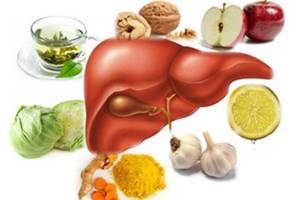
The diet for liver diseases should contain:
- reduced amount of salt and refractory fats;
- an increased amount of so-called lipotropic products, which include whey, buckwheat, cottage cheese;
- soups prepared from vegetable broths with the addition of cereals;
- unhealthy cookies and wheat bread of 1-2 grades (stale);
- lean meat and fish, steamed or boiled;
- small and long pasta;
- porridge with water or with the addition of milk (semolina, buckwheat, rice, oatmeal);
- low-fat and semi-fat fermented milk products;
- egg white omelettes;
- grated and boiled vegetables;
- boiled, baked and grated vegetables;
- tea with milk or lemon, rosehip infusion.
Diet after liver surgery
Surgical interventions involve trauma and tumor removal. After the operation, no earlier than 2 days, low-fat kefir, jelly, and tea are administered, ½ cup every 3 hours.
You can eat in fractional portions (150 g each) from the 3rd day after surgery. The diet includes:
- mashed potatoes;
- boiled pureed fish;
- tea or diluted juices (for example, pumpkin or apple).
On day 8 it is recommended to use:
- pureed porridge (oatmeal, buckwheat);
- boiled meat (whipped with a blender or scrolled);
- kefir, cottage cheese, yogurt;
- vegetable puree.
Combining a therapeutic diet with taking pharmacological drugs
Almost always, patients are forced to combine a diet with taking hepatoprotectors - special drugs for the treatment of liver and gallbladder diseases. There is nothing wrong with this; moreover, with this combination you can very quickly achieve remission and get rid of the manifestations of almost any liver disease. The exception is tumors, cirrhosis and hepatitis of viral etiology. These are very serious conditions that are life-threatening and require special treatment.
In order to support the liver after a toxic shock (alcohol abuse or forced use of antibiotics and other medications), you should take a course of modern hepatoprotectors. In parallel with this, it is imperative to adhere to nutrition according to the principles of therapeutic diet No. 5, otherwise the treatment will be less effective. The doctor may prescribe Essentiale, Ursosan (if there are also problems with the outflow of bile), Heptral for mental problems (this hepatoprotector also has an antidepressant effect - a new generation drug).
Who should not cleanse the liver?
The liver can be cleansed by anyone who has zero or low acidity; contraindications apply to the following categories of people.
☀ Patients with diabetes, especially type I diabetes.
☀ People whose chronic disease enters the exacerbation stage.
☀ Cookie cleansing cannot be carried out against the background of fever, headache, or cold.
☀ Pregnant women and women during breastfeeding.
☀ People who have increased acidity are at risk of exacerbation of gastritis and ulcerative process.
☀ Women during menstruation.
It is necessary to emphasize once again that before cleansing, it is advisable to undergo an examination (ultrasound) of the biliary system and consult not with relatives, neighbors or friends, but with a doctor in order to avoid acute obstruction of the bile ducts and urgent surgery.
The symbol of the liver is a tree
How to cleanse yourself with activated carbon
Nutritional value of offal
Why does the liver consist of a pair of sheets?
Diet for diseases of the liver and biliary tract
Fasting for a healthier body
The liver is the most important exocrine gland in the human body. It performs a number of important functions, including detoxification, synthesis of cholesterol and glucose, control of the amount of hormones, vitamins, ethanol, etc.
According to research, the health of a person’s liver is directly related to the quality of his diet, bad habits, and the amount of medications and alcohol taken. But, despite such external vulnerability, this organ is capable of regeneration.
Research confirms (1, 2) that certain dietary patterns can restore liver function, reduce the risk of developing many diseases and alleviate existing ones.
To stimulate recovery processes, you should adjust your daily diet by adding the “right” foods to it and eliminating harmful ones. The therapeutic diet described in this article is ideal for healing the liver and preventing diseases, and will also be useful for existing pathologies.
How to prevent relapse of the disease
Even if you managed to achieve remission - there are no visible manifestations of the disease, and the tests came back to normal, you cannot relax. Most liver diseases become chronic and will inevitably manifest themselves again after some time.
If a person again begins to frequently eat fatty foods, abuse alcohol and take toxic medications, then the liver will definitely make itself known. You shouldn't joke with this organ. Yes, it has the ability to self-heal. A person can and should help his liver begin to function properly as quickly as possible. But health does not tolerate neglect. To avoid relapses, you will have to adhere to the rules of therapeutic nutrition according to the “Table No. 5” diet for the rest of your life.
